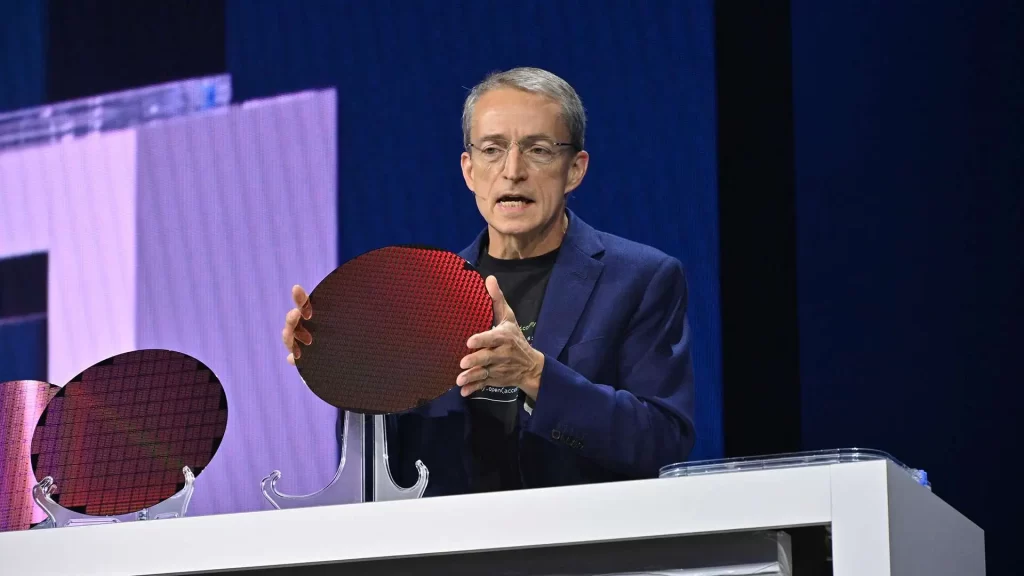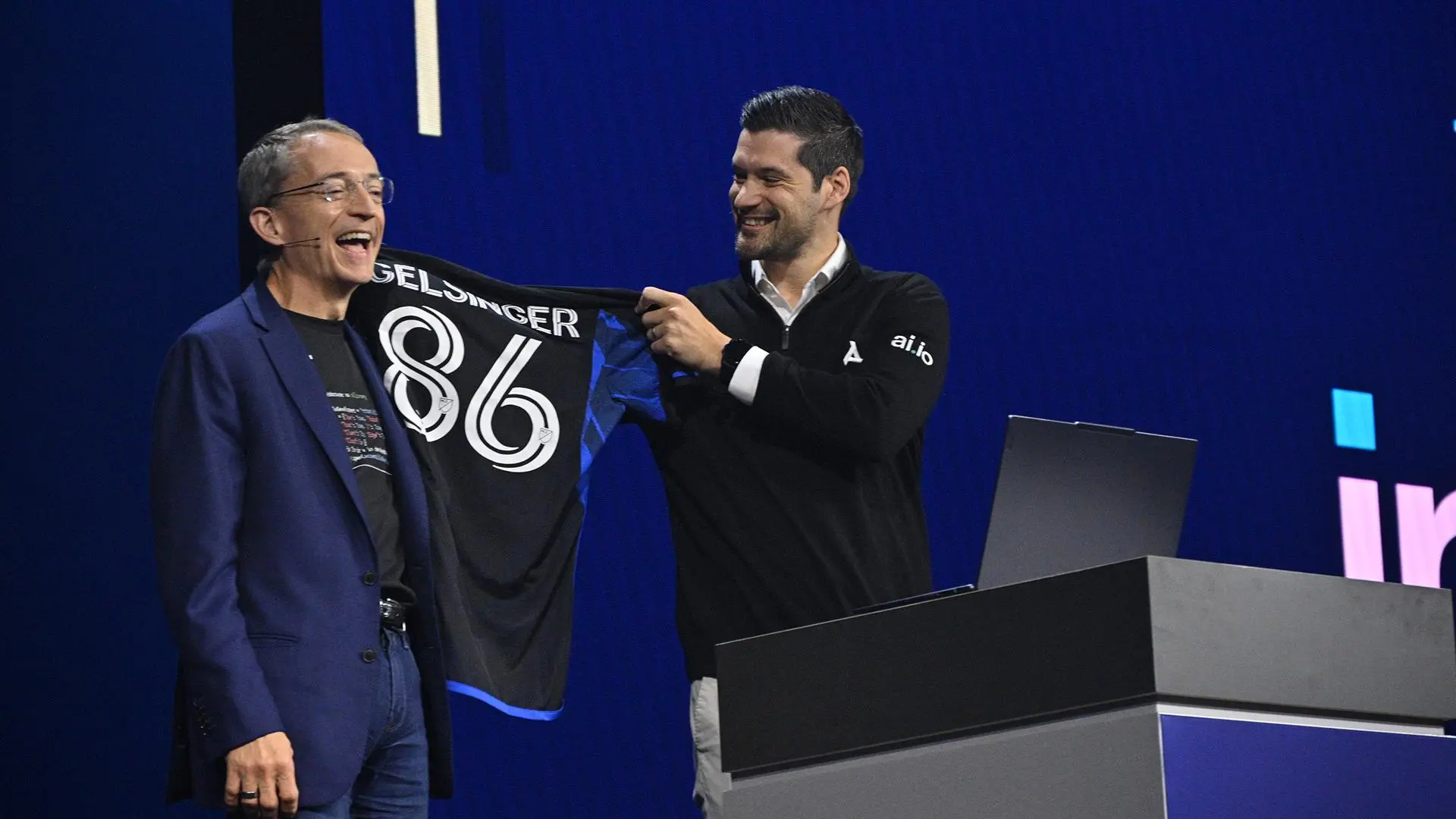Intel Innovation Day is a two-day event where Intel executives and industry leaders share the company’s latest innovations in computing, artificial intelligence, and other technologies.
CEO came to stage and started doing a number of Push UPs showing how hard Intel is trying to become the company their fans are expecting them to be.
This year’s event was held on September 19-20, 2023, in San Jose, California.
Intel Innovation Day provided a comprehensive glimpse into Intel’s future technologies and strategic plans.
Welcome to the Siliconomy!
~Pat Gelsinger, Intel
Follow us on Linkedin for everything around Semiconductors & AI
5 key takeaways from the event
AI everywhere.
Intel has made significant investments in AI in recent years, and AI is now a key focus for the company. Intel is developing AI-powered products and services for a wide range of applications, including PCs, data centers, and the edge.
Accelerating the convergence of AI and security.
This is also true. Intel is working to integrate AI into its security products and services to create more effective and efficient security solutions. For example, Intel is developing AI-powered threat detection and prevention capabilities for its processors and data center platforms.
Committed to open source.
Intel has a long history of supporting open source software, and this commitment is continuing in the AI space. Intel is developing and releasing open source AI tools and libraries, and it is also supporting open source AI initiatives such as the TensorFlow machine learning framework.
Investing in the future.
Intel is investing heavily in research and development, including in AI. The company is also investing in new manufacturing facilities, such as the Fab 52 expansion in Arizona.
Intel is a leader in sustainability.
Intel is committed to sustainability and environmental responsibility. The company has set ambitious goals to reduce its greenhouse gas emissions, water consumption, and other environmental impacts.

5 things to know about Intel innovation day
1. Intel’s Future AI Supercomputer and Advanced Gaudi Chips
Intel has announced ambitious plans to construct a sizable AI supercomputer utilizing Xeon Scalable processors and a remarkable 4,000 Gaudi2 deep learning processors. This initiative has gained significant traction with Stability AI, an AI model startup, committing as the anchor customer.
Gelsinger envisions Intel’s supercomputer as Europe’s largest and a top 15 globally. The partnership with Stability AI, known for Stable Diffusion text-to-image model, is a significant step in Intel’s AI journey.
Although the completion date for the supercomputer remains undisclosed, Intel is optimistic about the project. The Gaudi chips, which are integral to this endeavor, originated from Intel’s acquisition of Israeli startup Habana Labs in 2020, a strategic move aimed at establishing a prominent position in the AI chip domain and rivaling market leader Nvidia.
Gelsinger emphasized Gaudi3 chip advancements: double compute performance, quadruple bfloat16 performance, 1.5x network bandwidth, and memory boost compared to predecessors. Intel remains committed to integrating data center GPU and Gaudi roadmaps, aligning with Falcon Shores GPU set to launch in 2025 with Gaudi technology.
Read more: Intel Promises 1 Trillion Transistors on a Chip by 2030 Using Glass Substrates
2. Intel Manufacturing Global Expansion
Intel showcased its ongoing and upcoming ventures concerning semiconductor nodes, revealing a strategic global expansion plan. Notably, Intel 7 will be run in Israel and Intel 4 in Ireland, underlining the international scale of their operations.
Intel 3 and 20A will be based in Arizona, underlining its importance in Intel’s future plans. In Europe, Intel 18A may be situated in Magdeburg or Ireland, showcasing Intel’s global commitment to innovation.
Lastly, “Intel Next” is set to make an impact in Ohio, reinforcing Intel’s widespread node deployment strategy.
| Node | Location |
|---|---|
| Intel 7 | Israel |
| Intel 4 | Ireland |
| Intel 3 | Arizona, USA |
| Intel 20A | Arizona, USA |
| Intel 18A | Europe (Madgeburg, Ireland) |
| Intel Next | Ohio |
Read more: 5 reasons Why American Chip Dream is dying
3. Intel’s Vision for NVIDIA and IFS
Pat Gelsinger, Intel’s CEO, highlighted on Intel Innovation Day the potential to utilize their foundry and apply 3D stack caching across multiple products. Gelsinger also stated openness to manufacture chips for AMD and Nvidia in Intel’s wafer factories.
Nvidia currently relies on TSMC, but Intel could offer an alternative due to TSMC’s production constraints. Intel will use its Intel 4 process for the Meteor Lake CPU and TSMC 5nm for the GPU chip. Intel hinted at a future collaboration with Nvidia, indicating a promising prospect for Intel OEM Service.
They also mentioned upcoming 3D Stacked Cache products to compete with AMD’s 3D V-Cache technology, likely in future product lines like Arrow Lake, Lunar Lake, and Panther Lake.
4. Intel Unveils Lunar Lake: A Sneak Peek into the Future of Client CPUs
During his Intel Innovation keynote, Gelsinger pleasantly surprised the audience by showcasing a computer development system running Lunar Lake, an upcoming client CPU expected to debut no earlier than 2024.
“This marks the world’s inaugural presentation of our Lunar Lake system. Quite the unexpected reveal,” he remarked during the presentation.
Intel initially hinted at Lunar Lake back in 2022, emphasizing its commitment to delivering superior “performance per watt” through the Intel 18A manufacturing process, in conjunction with a process sourced from a third-party foundry.
A member of the company demonstrated the Lunar Lake system in action, utilizing local processing to generate an image from text using the Stable Diffusion model within the open-source GIMP image editing program.
Gelsinger reiterated Intel’s roadmap, emphasizing that Arrow Lake would follow Meteor Lake in 2024, with Lunar Lake anticipated to debut either in 2024 or 2025. Moreover, he revealed that Panther Lake, the successor to Arrow Lake, is set to be introduced in 2025.
5. AI-centric Meteor Lake CPUs to launch in December.
Intel is set to unveil its highly anticipated Meteor Lake CPUs for laptops on December 14, debuting them under the new brand name Intel Core Ultra. These advanced processors mark a significant milestone for Intel, incorporating an integrated neural processing unit (NPU) for efficient AI acceleration and local inference on PCs. Additionally, they leverage Intel Arc GPU technology to deliver discrete-level graphics performance through integrated graphics.
The Core Ultra CPUs optimize performance and power for AI tasks, utilizing CPU, GPU, and NPU effectively. The CPU ensures quick responses for lightweight AI tasks, while the NPU acts as an efficient, low-power AI engine for sustained workloads. However, Intel hasn’t released detailed specs, models, or pricing for volume purchases through channel partners yet.
Conclusion:
Intel’s new AI-powered products and services are poised to revolutionize a wide range of industries, from healthcare to manufacturing to transportation. Intel commitment to open source and its investment in research and development will ensure that the company remains at the forefront of innovation. Intel leadership in sustainability is essential to building a more sustainable future for all.








